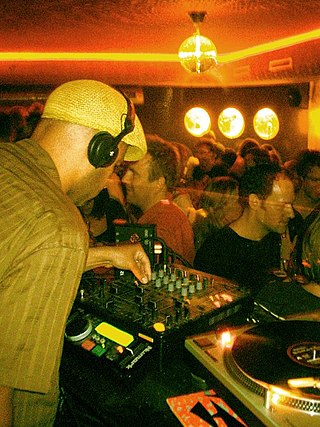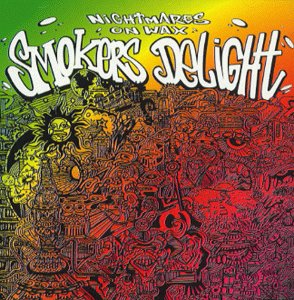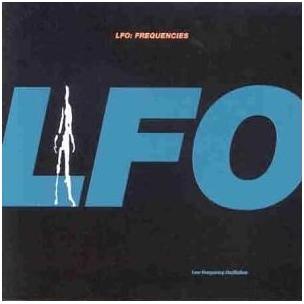
Warp Records is a British independent record label founded in Sheffield in 1989 by record store employees Steve Beckett and Rob Mitchell and record producer Robert Gordon. It is currently based in London.
Downtempo is a broad label for electronic music that features an atmospheric sound and slower beats than would typically be found in dance music. Closely related to ambient music but with greater emphasis on rhythm, the style may be played in relaxation clubs or as "warm-up or cool-down" music during a DJ set. Examples of downtempo subgenres include trip hop, ambient house, chillwave, psybient and lofi hip hop.

LFO was a British electronic music act formed in 1988 consisting of Mark Bell and Gez Varley. They released their acclaimed debut LP Frequencies in 1991 on Sheffield label Warp. After Varley left the group in 1996, Bell continued solo to release Advance (1996) and Sheath (2003). Bell died in October 2014, effectively ending the project.

4hero are an electronic music group from Dollis Hill, London, comprising producers Mark "Marc Mac" Clair & Denis "Dego" McFarlane. 4hero are known for being pioneers of breakbeat hardcore, jungle/drum and bass, broken beat and nu jazz music.
Electro is a genre of electronic dance music directly influenced by the use of the Roland TR-808 drum machines, with an immediate origin in early hip hop and funk genres. Records in the genre typically feature heavy electronic sounds, usually without vocals; if vocals are present, they are delivered in a deadpan manner, often through electronic distortion such as vocoding and talkboxing. It palpably deviates from its predecessor boogie by being less vocal-oriented and more focused on electronic beats produced by drum machines.

Yellow Magic Orchestra is the first official studio album by Japanese electronic music band Yellow Magic Orchestra, who were previously known as the Yellow Magic Band. Originally released by Alfa Records, in Japan in 1978, the album was released by A&M Records in Europe and the United States and Canada in early 1979, with the US version featuring new cover art but without the closing track of "Acrobat". Both versions would later be re-issued in 2003 as a double-disc format, with the American version as the first disc.

George Herbert Evelyn, better known by his stage name Nightmares on Wax or DJ E.A.S.E., is an English DJ and record producer from Leeds. His music has been released by Warp Records. He is based in Ibiza. Nightmares on Wax was originally a group consisting of Evelyn and John Halnon, and then later with Kevin Harper.
Warp 10 is a series of compilation albums issued by Warp Records in 1999 to celebrate the label's tenth anniversary. The collection spans three double CD/quadruple vinyl sets, which can be purchased individually. Each volume in the set highlights different phases of electronic music, including influential tracks not originally released by Warp, early releases from the first four years of the label's history, and the last being remixes by contemporary musicians of Warp's catalogue.
Rhythm King Records Ltd was a British independent record label, founded in the mid-1980s by Martin Heath, Adele Nozedar, DJ Jay Strongman and James Horrocks. It was based in Chiswick, London.

Smokers Delight is the second studio album by English DJ and record producer Nightmares on Wax. It was released in 1995 on Warp in the United Kingdom, and on Wax Trax in the United States. It peaked at number 84 on the UK Albums Chart.

Carboot Soul is the third studio album by Nightmares on Wax. It was released in 1999 on Warp. It peaked at number 71 on the UK Albums Chart. Early copies of the album were issued with a designer packet of Rizla rolling papers, which featured the album's artwork.

Ginger is the debut studio album by Dutch electronic music producer Speedy J. Released via a joint deal between Plus 8 and Warp in September 1993, the album was the sixth release in Warp's Artificial Intelligence series, which focused on "electronic listening music" by different artists. It peaked at number 68 on the UK Albums Chart and remains Speedy J's most successful album there.

Frequencies is the debut studio album by British electronic music duo LFO, released on 22 July 1991 by Warp. It peaked at No. 42 on the UK Albums Chart and was released to universal acclaim.

Soul Food Taqueria is the third studio album by American multi-instrumentalist and composer Tommy Guerrero. It was released on April 8, 2003, by Mo' Wax Records.

One is the debut studio album by English experimental electronic producer Req, recorded from September 1995 to 1996 and released on Skint Records in 1997. After releasing several EPs, Req decided to release an album to spread his sound. His conception for One was to create music that hints at a direction without ever arriving at one. Music critics had difficulty defining the album's style, and is seen as a "blunted take" on trip hop with downtempo ambience. The album was well received by critics, who praised its unique sound and production. Today, it is seen as a predecessor to the late 1990s' "intelligent big beat" of fellow Skint artists such as Lo-Fidelity Allstars, and in 2015, Fact named the album the 14th greatest trip hop album of all time.

Frequency Jams is the second studio album by English experimental electronic producer Req, released in 1998 on Skint Records. As with his debut album, One, Frequency Jams was recorded on a lo-fi 4-track recorder and featuries abstract arrangements that incorporate esoteric, fractured beats, while also introducing new, eclectic influences such as jazz-funk and avant-rock into Req's music. Some felt the album pushed Req closer to the avant-garde, with stronger usage of noise. The album has received critical acclaim for its bleak, dark tone and atypical production. It was named the year's 47th best album by The Wire.

Give 'Em Enough Dope Volume One is a compilation album of music by various artists released in 1994 by British electronic label Wall of Sound as their first release. The idea for the album came when Wall of Sound's founder, Mark Jones, wanted to release a compilation of hard-to-find music by unsigned artists, with whom he had worked with via his distribution and pressing deals, so that the music could be heard by a wider audience. He picked his favourite such tracks which there was already an audience for and this became the compilation.

Freek Funk is a studio album by British techno producer Luke Slater, released in October 1997 by Novamute Records as his first album for the label and his first for a major label. The album was among Slater's most personal works to date, and his intention for the album was to record music that went beyond the four-to-the-floor nature of techno and push the genre's barriers, resulting in an eclectic, minimal album that also incorporates funk, acid techno and electro styles. The album varies in tone, with aggressive techno tracks and softer, less upbeat material.

Nighttime World Volume 1 is an album by American electronic musician Robert Hood, released in 1995 on Cheap Records. Compared to his previous minimal techno work, the record features influences and elements from jazz, soul and downtempo. Its follow-up record, Nighttime World Volume 2, built upon the style of its predecessor and was released on Hood's M-Plant in 2000.
Bleep techno is a regional subgenre of techno which developed in the late 1980s in Northern England, Yorkshire. Named after its minimalistic synthesizer sounds, bleep techno combined influences from American techno and house, with electro elements and heavy sub-bass inspired by reggae sound system culture. The style was commercially successful between 1989 and 1991, and became associated with artists on the Sheffield label Warp Records. It has been characterized as the first unique British style of electronic dance music.
















